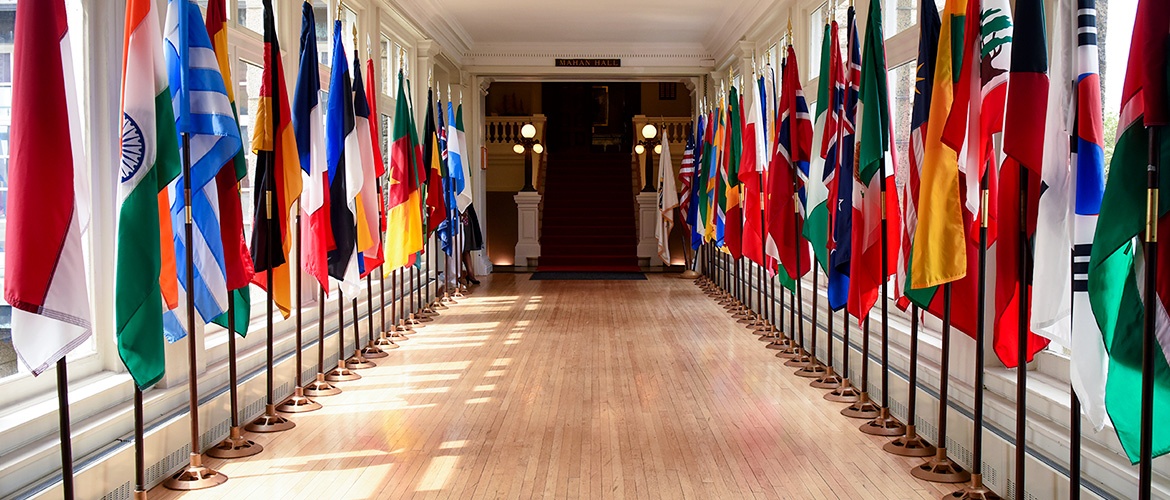During the post-World War II and post-Korean War era, the college saw a greater need for cooperative operations with other navies and established multiple enduring initiatives: the Naval Command Course for senior international officers in 1956, the Naval Staff College for intermediate-level international officers in the 1970s, and the convening of regular biennial meetings of the world’s chiefs of navies in the International Sea Power Symposia from 1969 onward.
In the 1950s, the Naval War College curriculum adapted to meet the circumstances Cold War period. Chairs were established to emphasize the attention given to international relations, maritime strategy, military and diplomatic history, international law, and economics. The influence of rapidly changing technology was further recognized in the establishment of military chairs, occupied by senior officers especially qualified in such areas as submarine warfare, electronic warfare, air warfare, amphibious warfare, and surface warfare. The student body grew, with substantial student representation from the U.S. Army, Marine Corps, Air Force, Coast Guard, and many mid-career professionals from civilian agencies, representation also reflected in the faculty.
In 1972, under the leadership of Vice Admiral Stansfield Turner, significant changes were instituted, including sharpening the curriculum’s focus on three academic areas. Over time, the names of the courses have changed slightly, but Turner’s general concept has remained constant for more than 35 years—concentrating on strategy and policy, national security and decision-making, and joint military operations.
During this time, the NWC also established a full-time, highly qualified teaching civilian and military faculty, adopted case study methodology and a more rigorous curriculum, and emphasized individual student effort. Concurrently, student selection criteria became more stringent.
In 1981, nearly a century after Stephen B. Luce founded the Naval War College as “a place of original research on all questions relating to war and the statesmanship connected with war, or the prevention of war,” the Center for Naval Warfare Studies was established for broadly based, advanced research on the naval contributions to national strategy. The center’s work informs and stimulates the faculty and students in the classroom as well as helping to link the college to the fleet and policy makers in Washington.
The college contributed substantially to the thinking behind the “Maritime Strategy” of the 1980s and the conduct of the Gulf War in 1990–91. In 1990, the Naval War College became the first of the nation’s staff and war colleges to reach academic standards that allowed for formal academic accreditation, leading to the authority to award its students a Master of Arts degree in national security and strategic studies.

